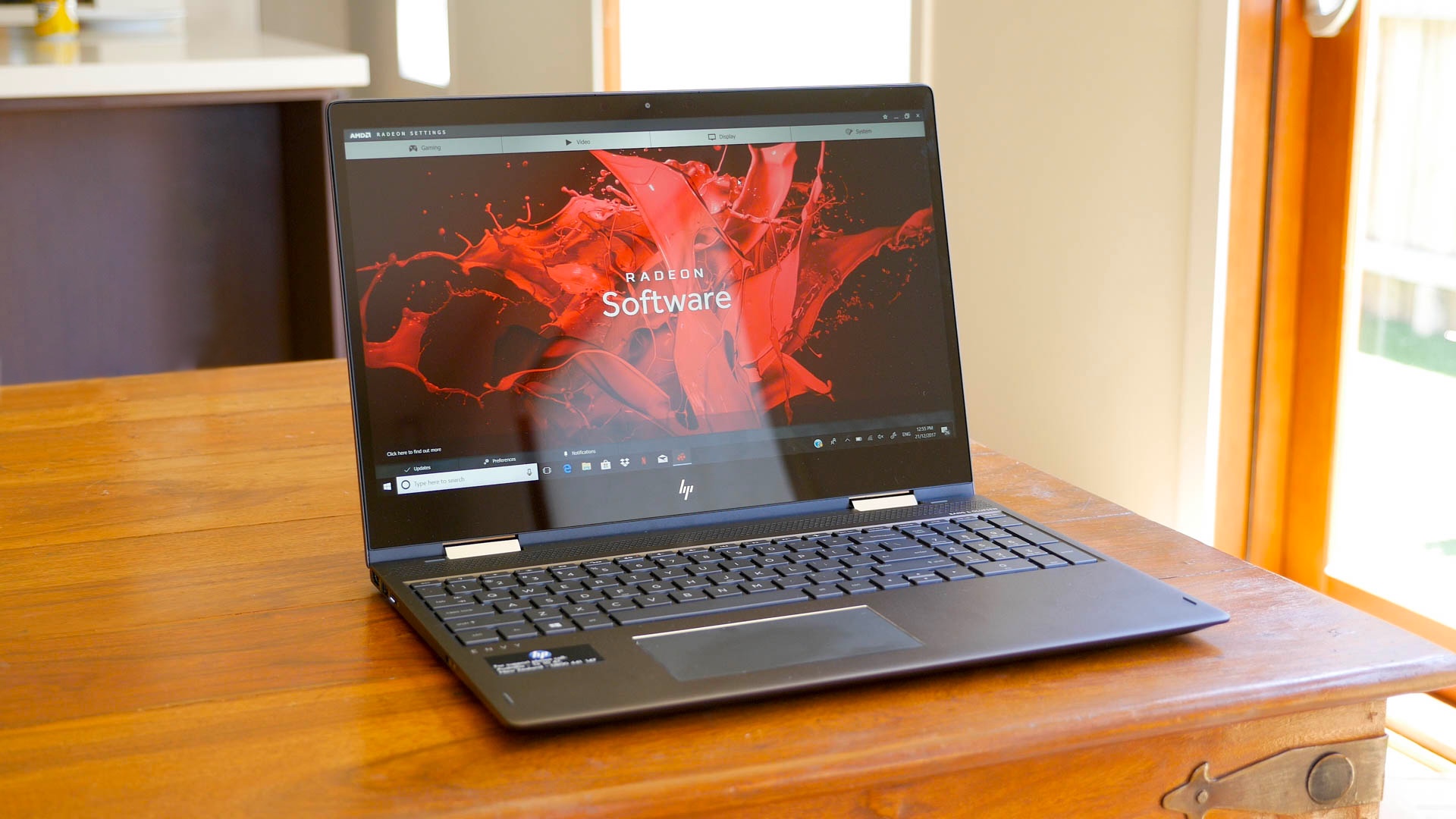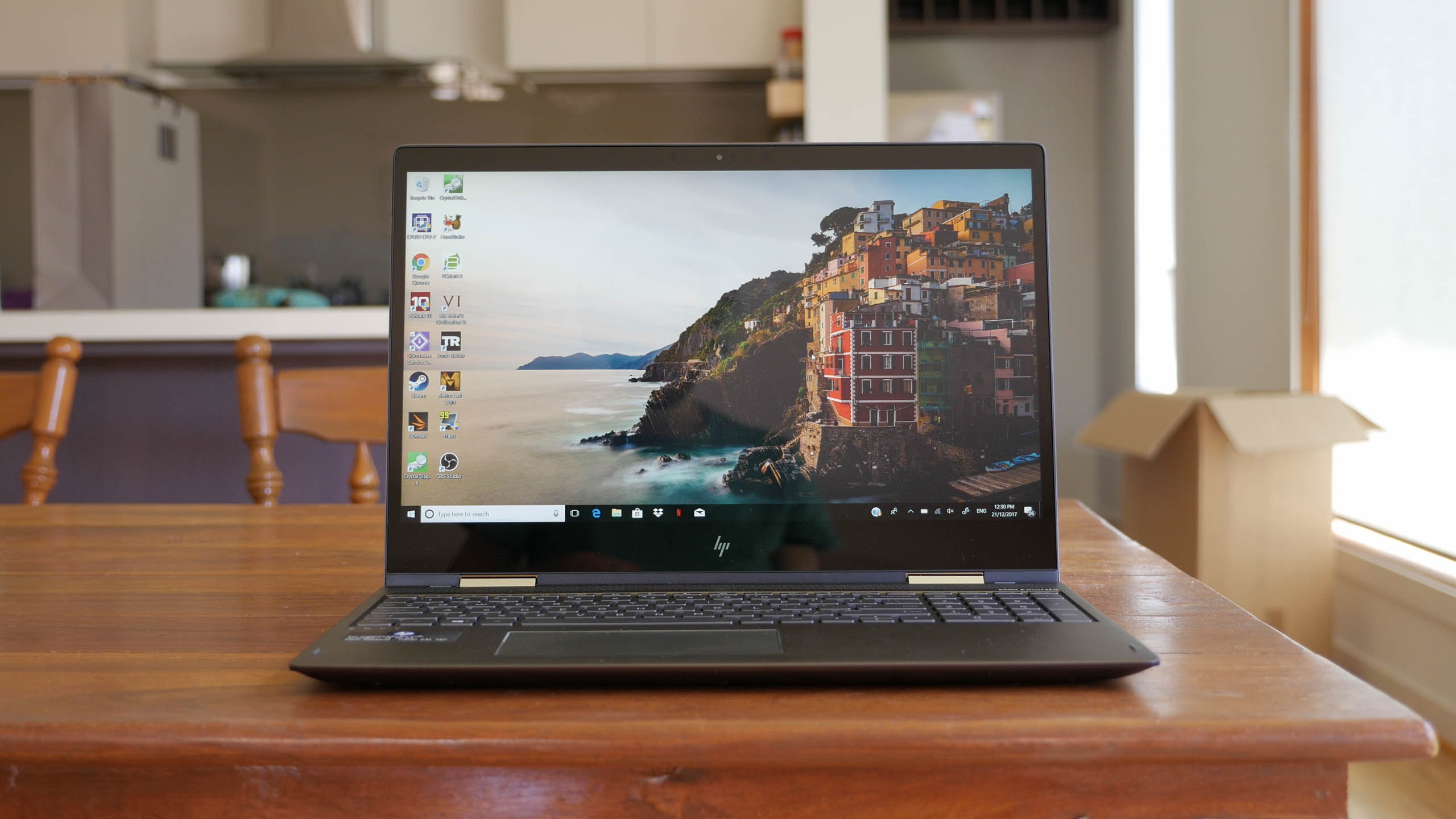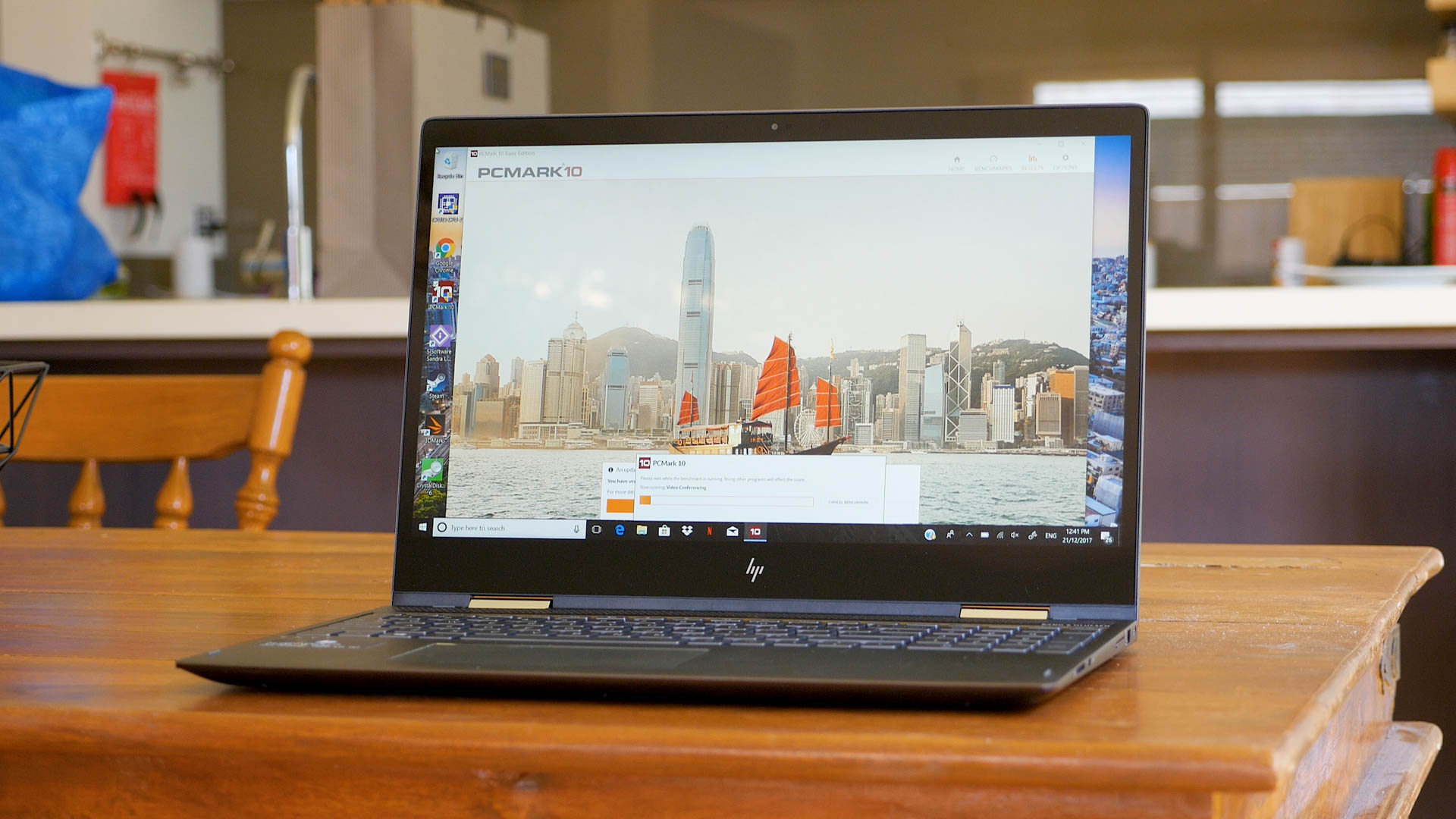Today we're looking at the very first set of official Ryzen Mobile GPU drivers to come from AMD. Owners of Ryzen Mobile laptops have been waiting for this day for months now, so the fact these drivers are finally out is great news for the small but growing community of Ryzen laptop early adopters.
Let's backtrack for a moment and catch you up with the full story of Ryzen Mobile laptops. The first devices to use Ryzen Mobile launched at the tail end of 2017, and while performance in some cases was pretty good thanks to the powerful integrated GPU, it quickly became apparent that work was still needed on the software side. GPU-accelerated productivity apps crashed frequently or didn't work at all, there were issues playing some games on the laptops despite having enough GPU horsepower, plus there were plenty of odds and ends that needed tidying up with new drivers. The hardware was there, it just wasn't very polished and there was a quintessential "early adopter" feel to the platform.
Over time, it became apparent that AMD and the OEMs weren't going to patch these problems in a timely fashion. AMD blamed the OEMs for slacking at pushing out software updates, and that's true to an extent, but realistically the platform needed proper drivers available through AMD directly. Throughout 2018 users discovered that hacking AMD's newer APU drivers to work on their Ryzen Mobile laptops delivered a more stable experience with better performance. But this was an unofficial, hacked together solution rather than the companies involved directly addressing the problems through official update streams. Not good enough.
Those who had bought Ryzen Mobile laptops for the fast integrated GPU in a portable form factor quickly became frustrated. Users became annoyed at the lack of driver optimizations for new games, which were available for APU and discrete GPU owners. That annoyance grew into anger as some systems hadn't received a single GPU driver update for a year, while those with Nvidia or even Intel GPUs received reasonably regular updates.
Thankfully, AMD listened and has finally launched official Ryzen Mobile GPU drivers that you can download directly from AMD.com (or from TechSpot's drivers section, of course). These drivers can be installed on any Ryzen Mobile device, whether that's a new system, or one of the original Ryzen laptops. It's not locked down by OEMs, it's designed to work as a generic, updated driver for all. It may have taken over a year but at least the drivers are now available.
Naturally, we wanted to test these new drivers and compare them to the originals that shipped with Ryzen Mobile laptops and then didn't get updated for ages. We still have our original HP Envy x360 15" with the Ryzen 5 2500U inside, so when the new drivers became available we installed them, updated a whole bunch of other things like Windows, BIOS and other utilities that had received updates since we reviewed the system, and put the updates through their paces.
The driver version we're testing is Radeon Software version 19.2.3, the latest version as of writing. We're going to go through our usual suite of laptop benchmarks to see how the HP Envy x360 performs compared to how it launched back in 2017. There's also going to be some game testing with direct before/after comparisons focusing on improvements from the drivers alone.
Application Performance
We won't bore you with the results from our CPU-limited workloads like PCMark 10, video encoding, MATLAB, 7-Zip, and so on. There is no difference in performance between the original launch state of Ryzen Mobile, and today with the latest drivers. This makes sense, the drivers are GPU drivers and many of the apps we benchmark don't use the GPU at all. So if you're expecting a few more Cinebench points from updating Windows, installing a new BIOS, and grabbing Radeon Software 19.2.3, think again.
Where the benefits are apparent is in GPU-accelerated productivity workloads. Blender is a prime example. Back when we reviewed the Envy x360, we could only get Blender to successfully complete our benchmark render once. Every other time it crashed or stalled, it was a disaster. With the update – and without updating the Blender application itself – the benchmark now completes every single time. So that's a massive stability improvement.
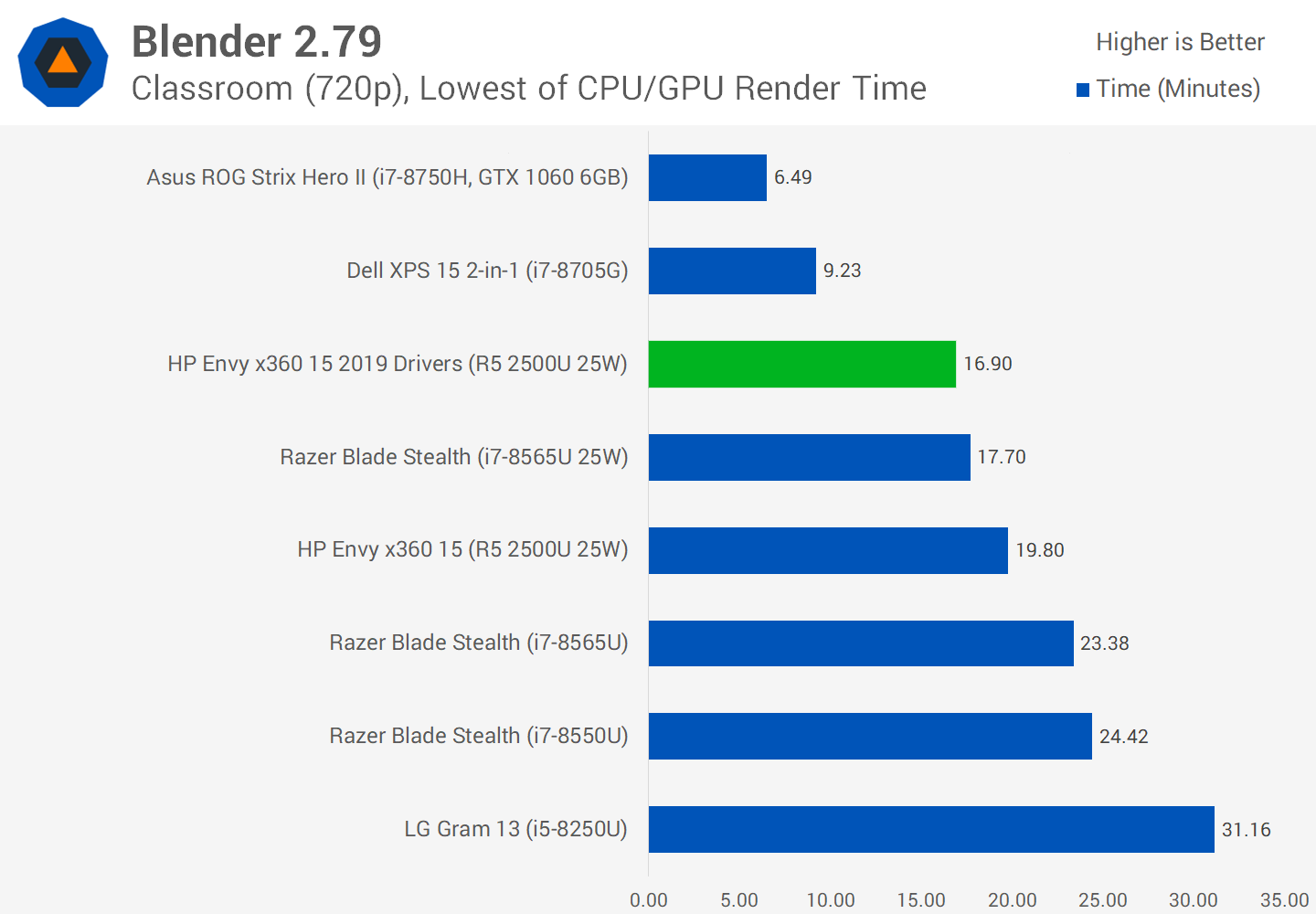
Performance is also improved. Our Blender benchmark, which runs entirely on the GPU, was 17% faster after all of these updates. That's a pretty handy improvement, placing AMD's integrated GPU around the mark of Intel's latest Core i7-8565U in a 25W configuration running the workload on the CPU. Given this is comparing a Ryzen 5 APU to a generally much faster Intel Core i7, that's a pretty good result purely from software tweaks.
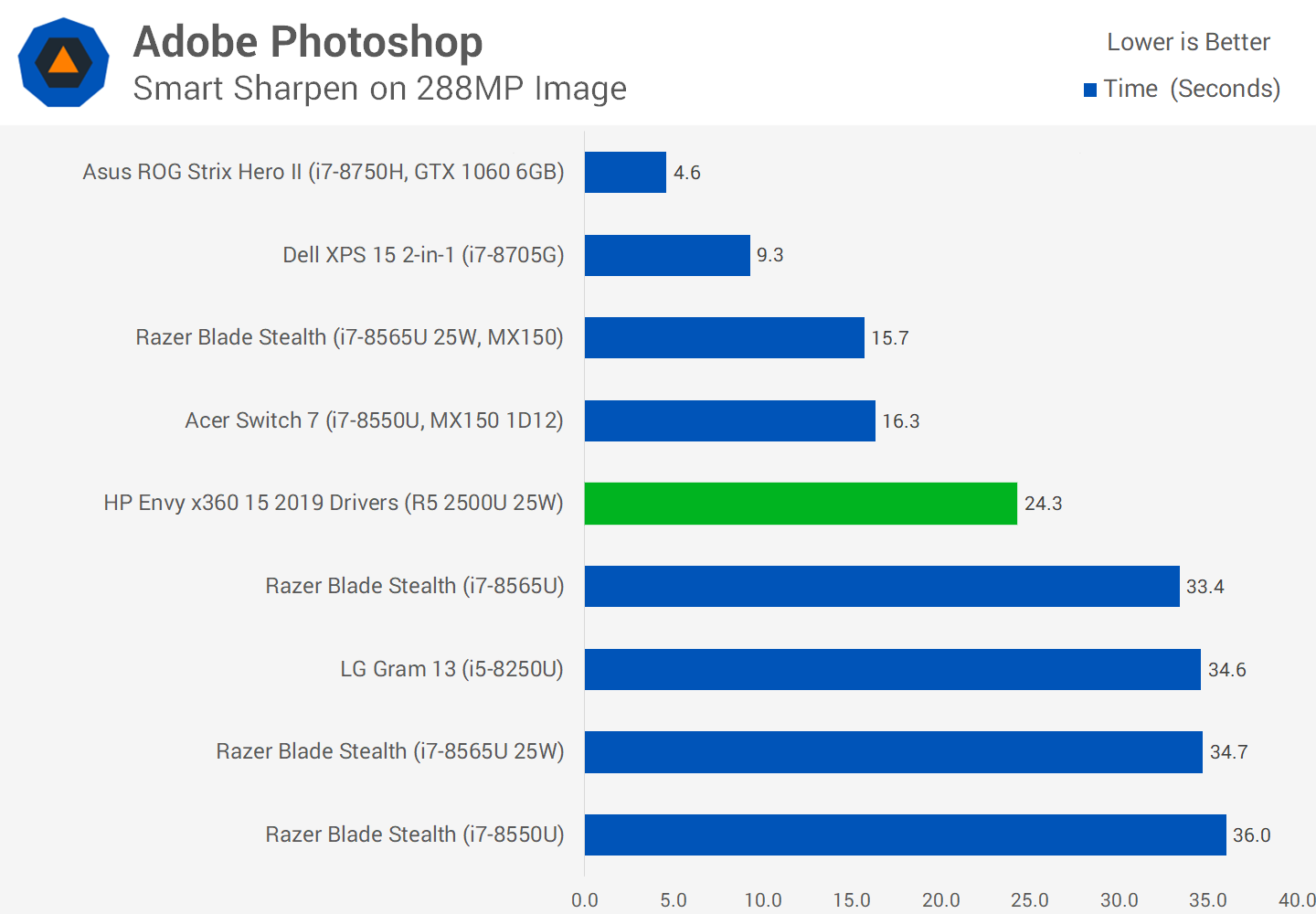
Even better is the ability to run some benchmarks that didn't work at all previously. Adobe Photoshop, for example, had problems with acceleration with the initial set of drivers. Now it works, allowing the Ryzen 5 2500U to slightly outperform the Core i5-8250U in our Iris Blur test.
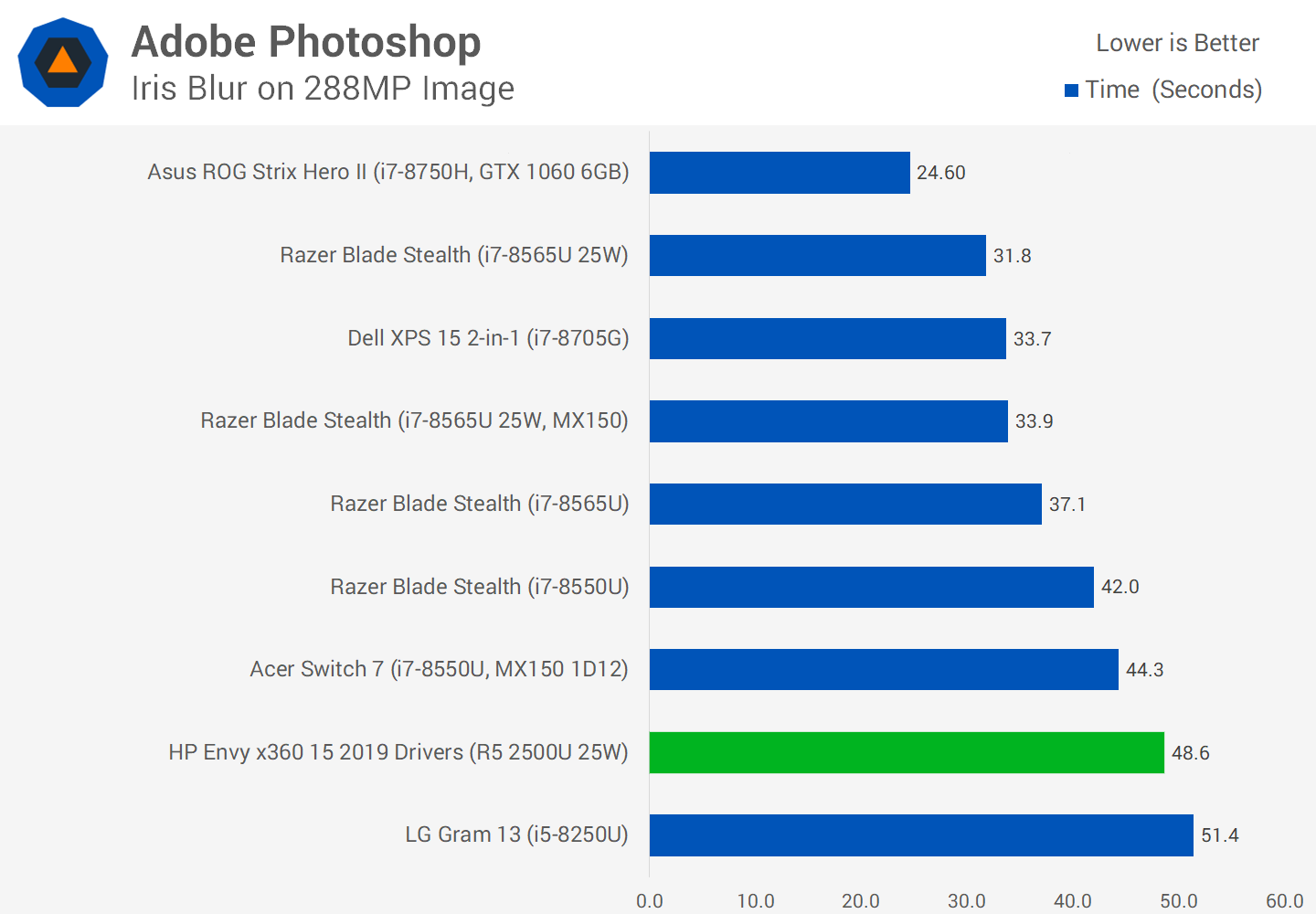
CompuBench is another workload we had a lot of problems with. Half the tests didn't work, the other half would frequently crash, to the tune of about 10 crashes for every 1 working benchmark run. With the latest drivers, there are still a few crashes, but they are infrequent and generally it is now possible for the entire benchmark suite to run without issue. Performance isn't improved but better stability is welcome.
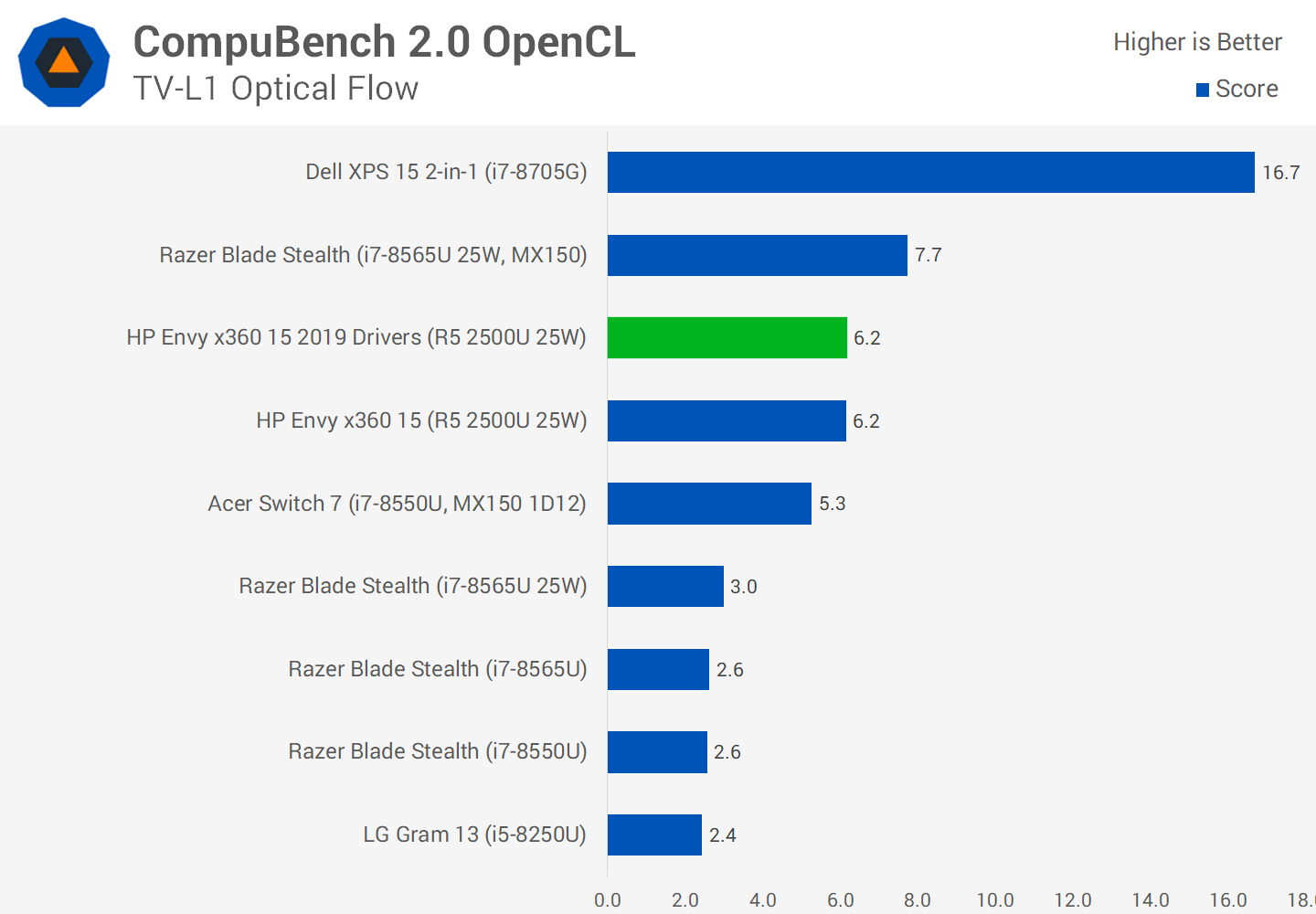
We still had issues with Adobe Premiere though. Even with all the latest updates, the Ryzen 5 2500U is still unable to GPU accelerate the crucial Lumetri color effect in Premiere with 4K footage. Lumetri is a widely used effect among creators for color correction, and while applying this to 4K footage might seem intensive, it can be easily GPU accelerated on Intel's integrated graphics and all of Nvidia's recent discrete GPUs.
The effect not working with Ryzen Mobile is a definite outlier, although Lumetri is bizarrely compatible with 1080p footage and below with this processor. Many other GPU accelerated effects also work.
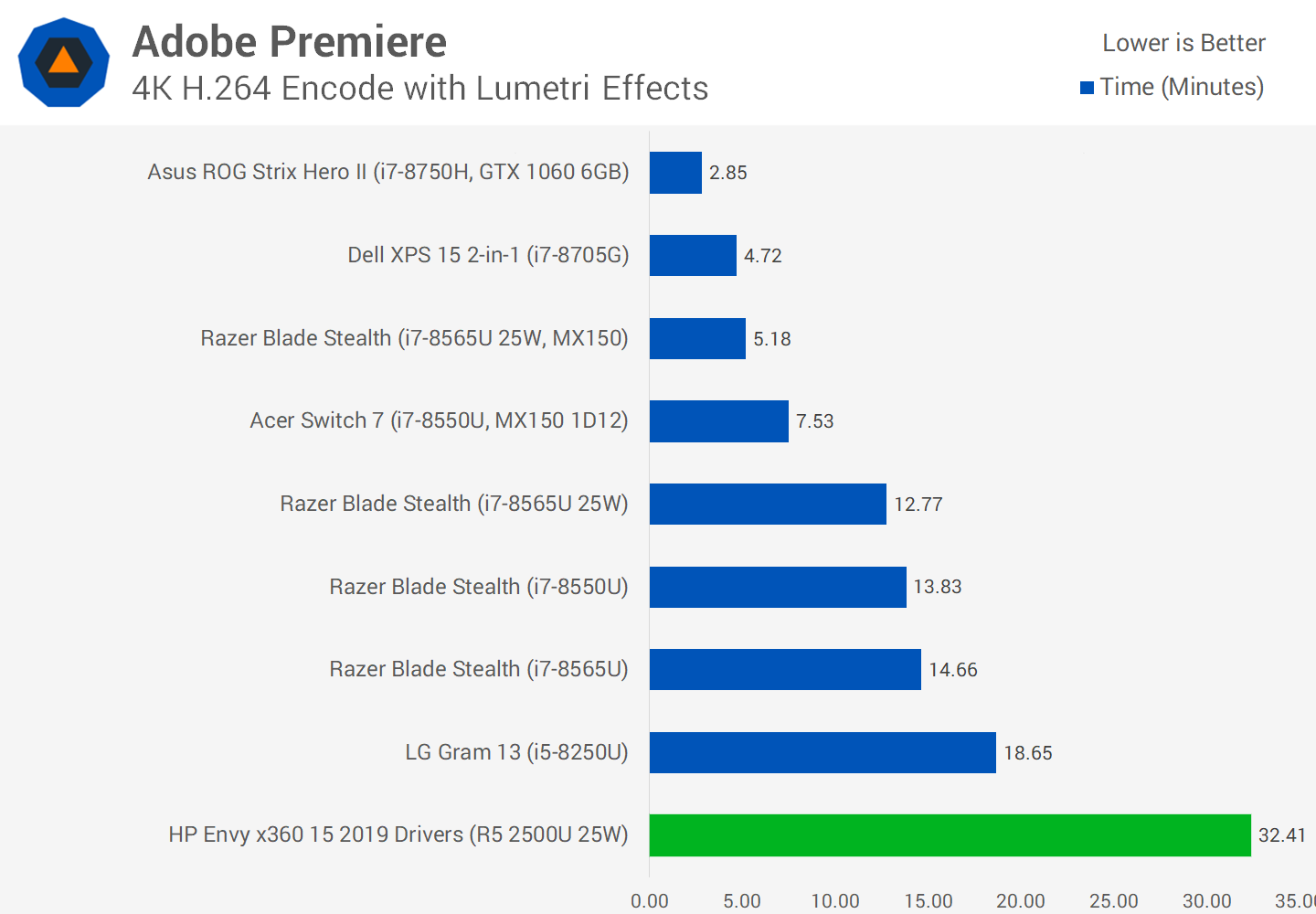
However our Premiere benchmark uses 4K footage and Lumetri color effects. This means even today, Ryzen Mobile gets destroyed by a mere Intel Core i5-8250U, taking over 30 minutes to render on the CPU alone. Without Lumetri effects, the Ryzen 5 2500U is faster. We've flagged this issue to AMD (again) so hopefully their driver team will look into it or at least provide an explanation as to why this effect is incompatible with Ryzen Mobile GPUs.
Gaming
Moving on to games, once again we want to stress how much better this new driver is with regards to stability, crashes and other technical issues. Previously, we had all sorts of problems with Ryzen Mobile gaming. Sometimes we'd load a game and the GPU would underclock itself compared to the previous load. Sometimes a game would only work in full screen mode and present artifacts when using borderless windowed mode. Sometimes a game would have Vsync forced on despite the option being disabled everywhere. Generic crashes and system reboots were common. It was a disaster even in lightweight games like Fortnite.
With the latest drivers, we haven't experienced any of these issues. All the games that we had trouble with now work fine. Crashes are gone. Basic functionality works. It's like the system has gone from an alpha pre-release set of software, to a proper finalized driver that's been tested by more than two people. It's great.
In terms of gaming performance, AMD has claimed this is where users should see big improvements over the launch drivers, specifically 17% average performance gains in Esports titles when going from driver version 17.40 to 19.2.3. However all our previous tests were done with version 17.7 not the even older 17.4, so let's see how those margins look like...
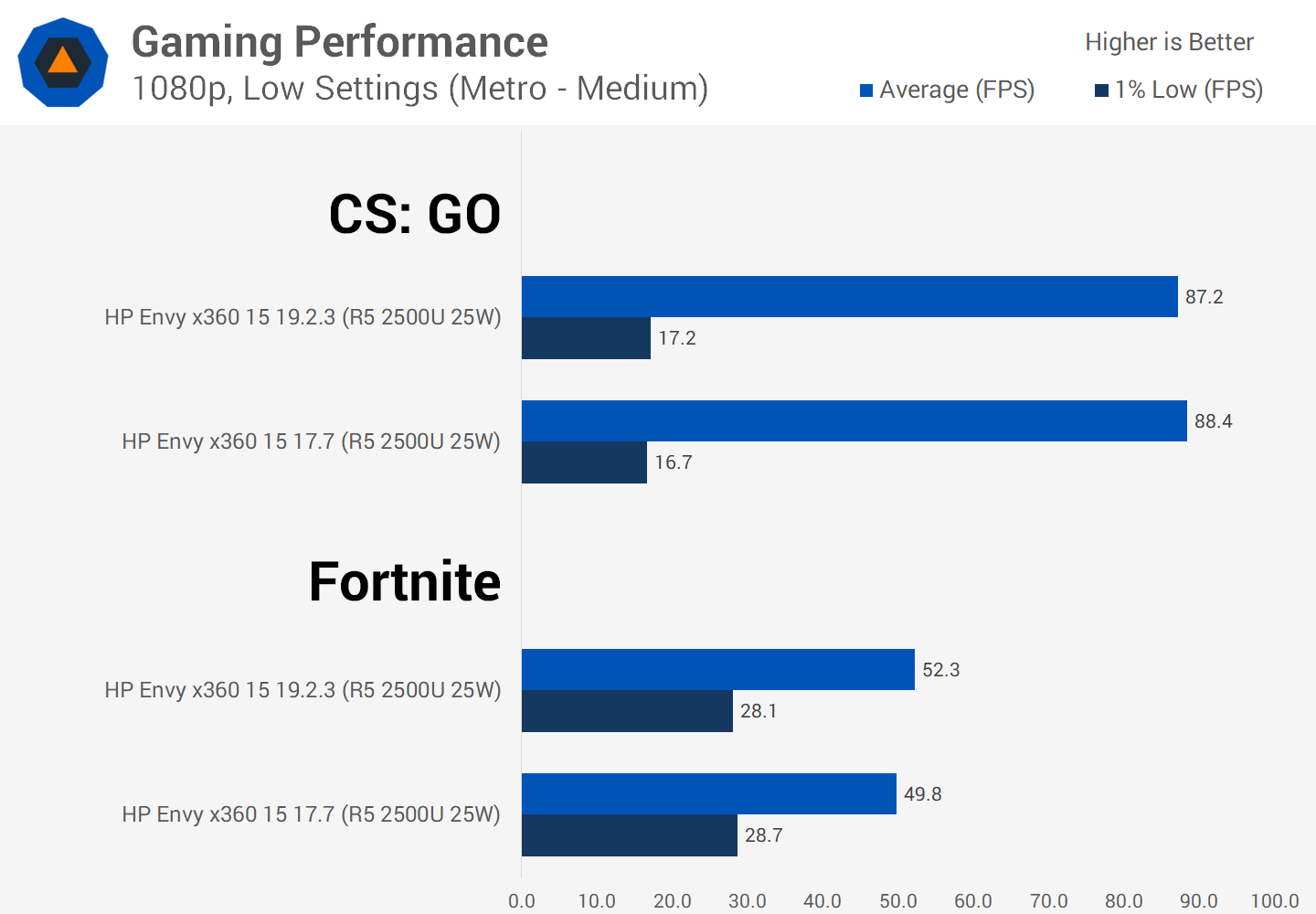
With Fortnite, we recorded a small 5% improvement on average framerates and no improvement to 1% lows, with our v17.7 data coming from runs where the game did not randomly underclock the GPU. A 5% improvement is fine, but the actual improvement your getting is that consistent performance every time you boot the game. The GPU still provides a good experience at 1080p with low settings.
When testing CS:GO we saw no difference in performance before and after the driver update.
Performance is much better in Civilization VI however, increasing by 15%. For a game that we think is well suited to a laptop form factor, getting up near the 60 FPS mark in intensive scenarios at native 1080p is a really good result. The improvement to 1% lows is phenomenal.
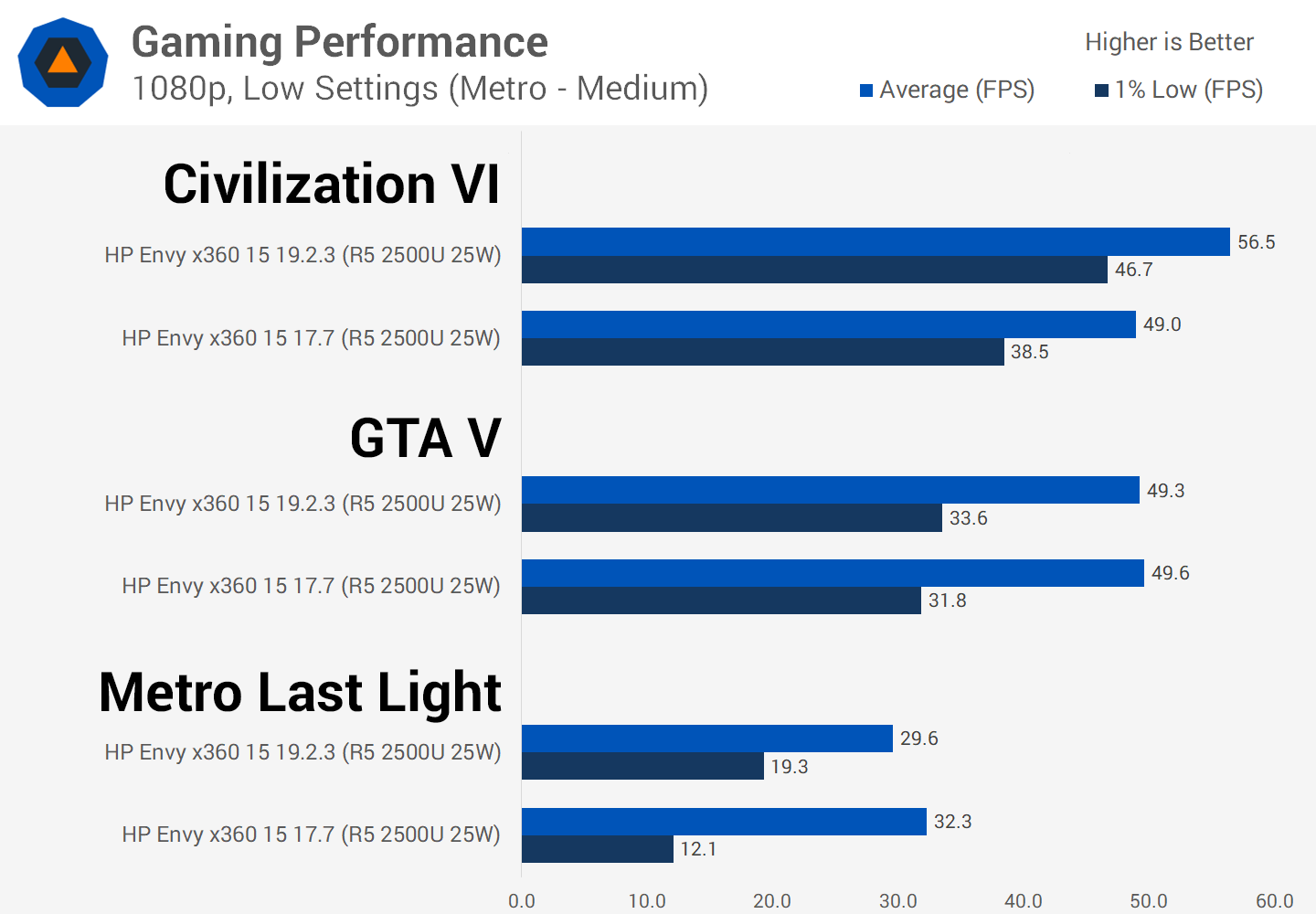
Testing GTA V saw no difference in average frame rates, but a handy increase in 1% low performance that allows the game to run smoother in general. While you'll still have to play on the lowest settings, performance is respectable from a low-power APU.
Metro: Last Light is the most punishing game we tested despite being an older game at this point. Average performance decreased by ~9 percent this time which is disappointing, however this was compensated with a large improvement to 1% lows, allowing the game to run more smoothly.
Other Improvements
Battery life should also be mentioned. Ryzen Mobile was never amazing from a battery life perspective, and early systems tended to have strange idle clock behavior, such as idling too high on the GPU. That's been resolved, which in a few battery benchmarks resulted in up to a 7% improvement. Nothing amazing, but we were surprised to see an improvement at all.


Overall the new drivers bring a number of improvements and moving forward every new Radeon GPU driver release will effectively work with Ryzen Mobile which is how it should be. Performance has seen minor gains with a few outliers, notably Blender and Civilization VI, that saw gains of about 15%.
The more important improvements come in the form of stability and bug fixes. Almost every issue we had with Ryzen Mobile has been resolved. Games are more stable and deliver more consistent performance. It's not perfect yet, there are still issues with Lumetri in Premiere and a few apps still hang or crash more often than we'd expect, but overall this is a significant step forward.
Support for some of AMD's driver features that are accessible on discrete GPUs, such as ReLive are not available yet, which may disappoint some, however the drivers are still a work in progress and it seems AMD spent most of their efforts on stability and performance, with features to come later.
And that's the beauty of this new driver ecosystem for Ryzen Mobile. You won't have to wait months for a new GPU driver for their laptop APUs, we should expect monthly updates in line with their desktop cards. Over time we expect bugs to be patched, features to get added and performance to improve. Or at least that's the promise, we'll have to see this play out, but this is a good first step.
It shouldn't have taken AMD this long to get their act together on Ryzen Mobile. Early adopters no doubt didn't see the best of Ryzen, but given the company's success on the desktop and server family of processors, it's only logical they seek to win on the huge laptop market as well. As the Ryzen Mobile platform grows this shouldn't be as much of an issue moving forward.
